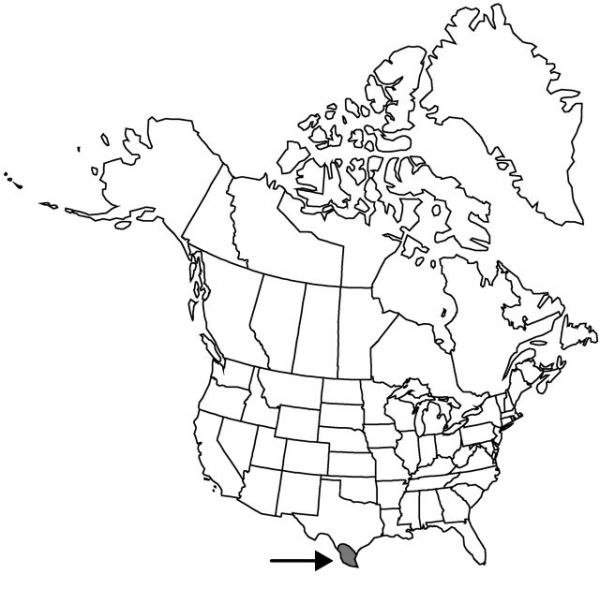Manfreda maculosa
Contr. U.S. Natl. Herb. 8: 17. 1903.
Rhizomes cylindrical. Leaves sprawling, succulent, to 36 × 0.6–2.5 cm; blade spotted with green or brown, glaucous, channeled, linearlanceolate, brittle, margins with small, sparse, cartilaginous teeth. Scape 4.2–13.1 dm. Inflorescences open, to 4 dm, 7–33-flowered. Flowers erect, usually sessile, with strong, sweet odor; tepals pale-yellow or white, becoming pink to rose; perianth-tube funnelform, equal to or longer than ovary, 0.6–2.6 cm; limb lobes recurved, 0.9–1.9 × 0.3–0.5 cm; filaments bent near tip in bud, inserted near top of tube, exceeding tube by 0.8–2.2 cm; ovary 6–19 mm; style exceeding tube by 0.5–2.2 cm, usually shorter than stamens; stigma white, not clavate, deeply 3-lobed, lobes reflexed. Capsules ellipsoid, 1.1–2.4 × 1–1.5 cm.
Phenology: Flowering spring–early fall.
Habitat: Sandy or clay soils, in mesquite scrubland, in dry or moist sites
Elevation: 0–300 m
Distribution

Tex., Mexico (Coahuila), Mexico (Nuevo León), Mexico (Tamaulipas)
Discussion
Chopped rhizomes of Manfreda maculosa have been used as a source of soap and shampoo in Texas, and plants are occasionally sold as ornamentals (S. E. Verhoek 1978b). Leaf size varies with growing conditions; flower size and ratio of floral parts are variable. The epithet maculata, which properly applies to a different Mexican species, has been used erroneously for this species.
Selected References
None.
Lower Taxa
"thick" is not a number. "thin" is not a number."dm" is not declared as a valid unit of measurement for this property. "dm" is not declared as a valid unit of measurement for this property."dm" is not declared as a valid unit of measurement for this property.